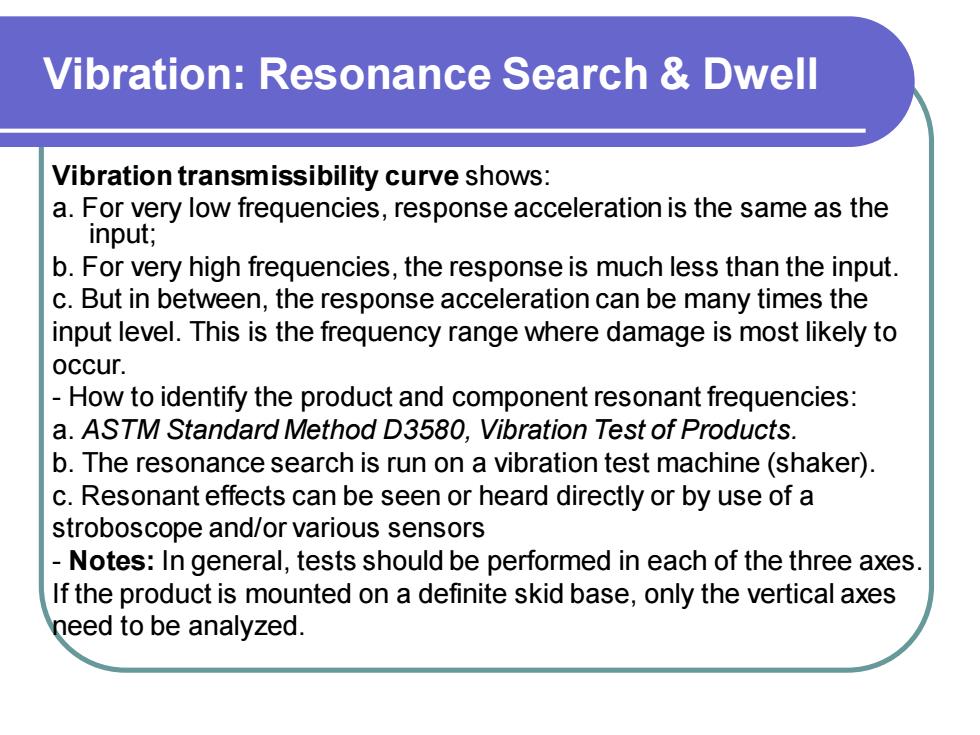正在加载图片...

Vibration: Resonance Search & Dwell Vibration transmissibility curve shows: a. For very low frequencies, response acceleration is the same as the input; b. For very high frequencies, the response is much less than the input. c. But in between, the response acceleration can be many times the input level. This is the frequency range where damage is most likely to occur. - How to identify the product and component resonant frequencies: a. ASTM Standard Method D3580, Vibration Test of Products. b. The resonance search is run on a vibration test machine (shaker). c. Resonant effects can be seen or heard directly or by use of a stroboscope and/or various sensors - Notes: In general, tests should be performed in each of the three axes. If the product is mounted on a definite skid base, only the vertical axes need to be analyzed.Vibration: Resonance Search & Dwell Vibration transmissibility curve shows: a. For very low frequencies, response acceleration is the same as the input; b. For very high frequencies, the response is much less than the input. c. But in between, the response acceleration can be many times the input level. This is the frequency range where damage is most likely to occur. - How to identify the product and component resonant frequencies: a. ASTM Standard Method D3580, Vibration Test of Products. b. The resonance search is run on a vibration test machine (shaker). c. Resonant effects can be seen or heard directly or by use of a stroboscope and/or various sensors - Notes: In general, tests should be performed in each of the three axes. If the product is mounted on a definite skid base, only the vertical axes need to be analyzed